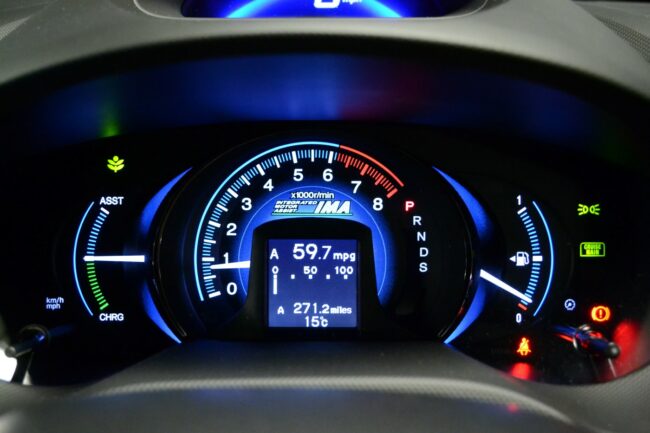
Buying a new car is a big decision, one of the burning questions on every buyer’s mind is, how many miles does a new car have? The mileage of a vehicle can significantly impact its value, reliability, and overall longevity. We will explore the subject in depth in this article. The shed light on the factors influencing a new car’s mileage. By the end, you’ll have a clearer understanding of what to expect when driving your shiny new set of wheels.
Understanding the Terminology
Before we dive into the specifics, let’s establish a common understanding of the terminology used in the automotive world. When we refer to a “new car,” we are generally talking about a vehicle that has never been registered or titled, typically purchased directly from a dealership. That’s why it’s always interesting how many miles does a new car have. These cars are fresh off the assembly line, waiting to embark on their maiden voyage.
Factory to Dealership
From the moment a new car rolls off the assembly line to the time it arrives at the dealership, it accumulates some mileage. However, it is crucial to note that this mileage is minimal and primarily occurs during the transportation process. The distance between the manufacturing plant and the dealership can vary depending on the location. On average, a new car may have anywhere between 10 to 50 miles on its odometer upon arrival at the dealership. These miles are a result of test drives, inspections, and transportation from the factory. Follow general description of the procedure:
- Production: The car is built at the manufacturing plant. This involves assembling various components such as the engine, chassis, body, interior, and electronics.
- Quality Control: Once the car is assembled, it undergoes a series of quality control checks to ensure that it meets the manufacturer’s standards. This includes testing various functions, inspecting for any defects, and conducting performance tests.
- Packaging and Shipping: After passing quality control, the car is prepared for transportation. It is typically cleaned, and any additional accessories or documentation are added.
- Distribution Center: In some cases, cars are first transported to a distribution center, which serves as a central hub for distributing vehicles to various dealerships. At the distribution center, the cars may undergo further inspections and final preparations before being sent to the dealerships.
- Sales and Delivery: The car is now ready for sale. Potential buyers can visit the dealership, test-drive the car, and finalize the purchase. After the transaction is finished, the required documentation is created, and the customer is given ownership of the vehicle.
Test Drives and Display Models
Prospective customers frequently take new cars out for test drives after they arrive at the showroom. These test drives allow customers to get a feel for the vehicle, experience its performance, and make an informed decision. Consequently, the new car’s mileage may increase slightly during this stage. Moreover, some dealerships have display models that are used for showcasing the features and specifications of a particular make or model. These display models may also accumulate a small number of miles from test drives or presentations.
Purchasing a New Car- How many miles does a new car have?
The mileage on the car will change depending on the circumstances when you finally decide to buy a new one. Everyone is interested how many miles does a new car have. If you choose a car from the dealership’s existing inventory, it may have more miles than a custom-ordered vehicle. However, if you decide to place a custom order, the mileage will be minimal, limited to the transportation from the factory to the dealership.
Online Car Sales
Online car sales have grown in popularity recently, enabling customers to conveniently buy vehicles from the comfort of their homes. Several platforms and websites specialize in facilitating online car sales, offering a wide selection of new and used vehicles from various dealerships and private sellers. Before making an online car purchase, it’s crucial to research the platform’s reputation, read customer reviews, and verify the seller’s credibility.
The best tool to stop car mileage
The Super Kilometer Filter provides a cutting-edge mileage blocker that successfully prevents the accrual of distance while a car is moving. This remarkable tool was initially created by German manufacturers for testing and fine-tuning reasons. Its main purpose is to stop the mileage recording process, making sure that no further miles are recorded to the initial distance. Furthermore, the system uses cutting-edge technology and doesn’t save any data in the control units. This makes sure that the data is undetectable and untraceable by anybody.
Takeaway
To answer the question, “How many miles does a new car have?” it depends on various factors, one of the main factor is transportation from the factory, test drives, etc. However, a new automobile normally only has a minimal mileage, often between 10 and 50 kilometers. Remember, these miles are primarily a result of transportation and necessary dealership procedures.
Latest Posts
- 1
- 2
Is Buying a Car with Over 100k Miles a Good Idea?
April 10, 2024 - 3
Why Are High Mileage Cars So Expensive? – A Guide
April 5, 2024 - 4
Where Is The Mileage Located In A Car?
April 3, 2024 - 5
Whats High Mileage in Vehicles?
March 29, 2024 - 6
What’s The Gas Mileage On A Smart Car: A Comprehensive Guide
March 27, 2024 - 7
At What Mileage Should You Sell Your Car?
March 22, 2024 - 8
Should You Buy a Car with Over 100k Miles?
March 20, 2024 - 9
Should You Buy a Car with 100k Miles?
March 15, 2024 - 10
Understanding ODO Meaning in a Car
March 13, 2024








